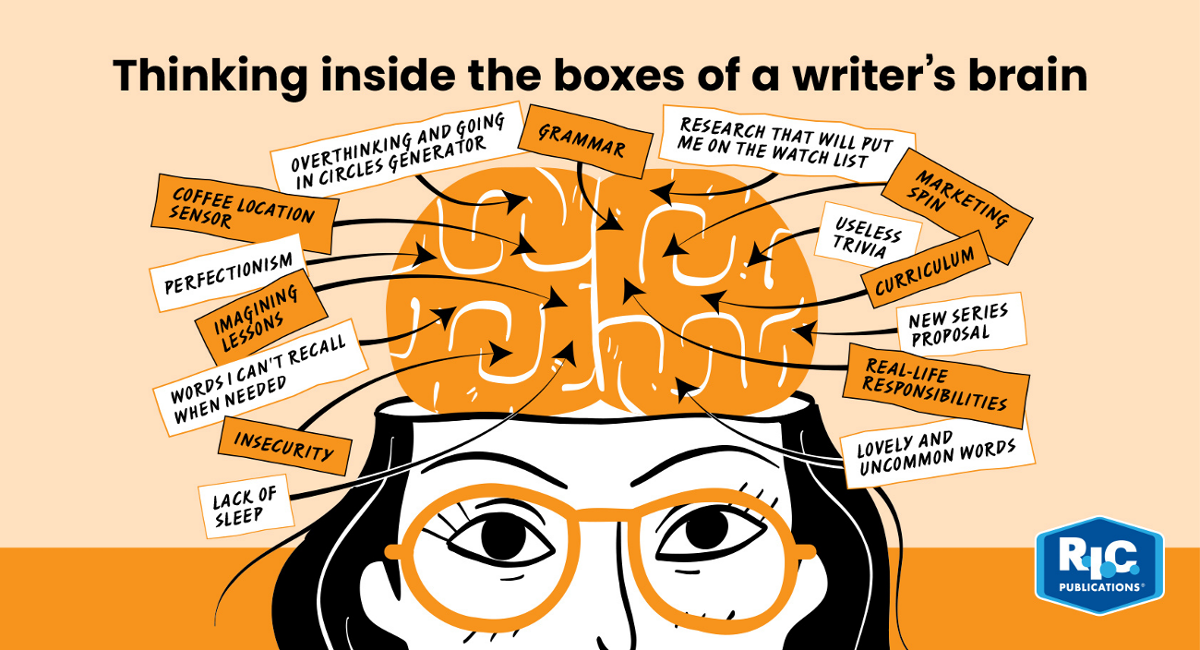- Friday 10 March 2023
- 0 Comments
Pffft, what’s taking those writers so long? Why are they wasting time? Just get typing!
I wish I could just write, but my brain goes on a long journey before I even commit my fingers to the keyboard. My thoughts travel through every box in my brain, and then I know I have to bring everything back and make it all comprehensive.
If my brain was a physical space, it would have many shelves full of grammar rules and vocabulary, filing cabinets brimming with curriculums from around the world, baskets overflowing with lesson ideas, ever-present piles of pedagogical practices (fancy way of saying ‘best way to teach’) and of course, glaring deadlines!
This fusion of a writer-brain and a teacher-brain makes for some interesting times!
Being a teacher first, I feel it is my responsibility to think like a teacher and imagine how what I’m writing will work for other teachers, and make their jobs easier, while still providing a quality product. I know it sounds cheesy but it’s true. It’s what our company has historically strived to achieve. Of course, this requires researching, planning, collaborating, reflecting and everything else a teacher does in the classroom—the difference being that writers’ classrooms are in our heads.
So, yes, others may be able to write something quickly and pull content together to create a resource, but we want to write something that we are proud of as educators. And we need to go through every shelf, filing cabinet, basket and pile in the ‘house’!
It is no surprise that students also face a similar brain-drain when it comes to writing. We want them to come up with an interesting piece of text in the space of a literacy lesson while their little minds are considering comprehension, spelling, grammar, and vocabulary. Maybe they just need a little more time, and a little more practice, to be able to learn how to organise the shelves and filing cabinets in their brains.
This can easily be achieved with the selection of English boxes we have available. I like that they break down the specific skills needed to be fluent writers and readers. The resources also cater to students who think and learn differently, as they offer differentiation and flexibility of use.
The Comprehension Strategies Boxes break fiction and nonfiction text into numbered paragraphs, with corresponding questions—making for a versatile style of teaching. This series is well researched and consists of proven strategies to support teachers to unlock their students’ reading and comprehension ability. These strategies include predicting, visualising, making connections, questioning, clarifying, summarising, determining importance, inferring, and synthesising.
When children connect the skills of spelling, reading, comprehension and grammar with their imaginations, they naturally become better writers. Remember, these skills click into place at different stages for everyone, but, when they do, anything’s possible.
Michele
Teacher, writer and parent
